

 Search
Search
-
 Tire sizes
Tire sizes
Tire sizes
- 4x4
- Коммерческие авто
- Легковые авто
-
15
235/75 R15 195/80 R15 12.5/33 R15 12.5/35 R15 255/70 R15 265/70 R15 9.5/30 R15 11.5/32 R15 10.5/33 R15 10.5/31 R15 205/70 R15 215/75 R1516
235/70 R16 235/85 R16 285/75 R16 245/75 R16 245/70 R16 255/65 R16 255/70 R16 265/75 R16 265/70 R16 305/70 R16 275/70 R16 315/75 R16 205/65 R16 215/65 R16 215/70 R16 215/85 R16 225/75 R16 225/70 R1617
235/65 R17 235/55 R17 285/65 R17 285/75 R17 285/70 R17 12.5/33 R17 12.5/35 R17 12.5/37 R17 245/65 R17 245/75 R17 245/70 R17 255/65 R17 265/65 R17 265/70 R17 305/70 R17 275/65 R17 275/70 R17 295/70 R17 315/70 R17 215/65 R17 215/60 R17 225/65 R17 225/60 R17 225/55 R1718
235/65 R18 235/60 R18 235/50 R18 235/55 R18 285/65 R18 285/60 R18 12.5/33 R18 12.5/35 R18 245/60 R18 255/70 R18 255/60 R18 255/55 R18 265/65 R18 265/70 R18 265/60 R18 305/60 R18 275/65 R18 275/70 R18 325/65 R18 215/55 R18 215/45 R18 225/60 R18 225/50 R18 225/55 R1819
235/65 R19 235/60 R19 235/50 R19 235/55 R19 285/45 R19 245/50 R19 245/55 R19 245/45 R19 255/50 R19 255/55 R19 265/50 R19 265/55 R19 265/35 R19 275/50 R19 275/55 R19 275/40 R19 275/35 R19 225/55 R1920
235/50 R20 235/55 R20 285/50 R20 285/55 R20 285/45 R20 285/40 R20 12.5/33 R20 12.5/35 R20 245/50 R20 245/45 R20 255/60 R20 255/50 R20 255/55 R20 255/45 R20 265/60 R20 265/50 R20 265/55 R20 265/45 R20 265/35 R20 305/60 R20 305/55 R20 305/40 R20 275/65 R20 275/60 R20 275/50 R20 275/55 R20 275/45 R20 275/40 R20 275/35 R20 275/30 R20 295/40 R20 325/60 R20 315/35 R2021
235/50 R21 285/45 R21 285/40 R21 285/30 R21 245/45 R21 255/45 R21 255/40 R21 255/35 R21 265/45 R21 265/40 R21 265/35 R21 305/35 R21 275/50 R21 275/45 R21 275/40 R21 295/40 R21 295/35 R21 315/40 R21 315/30 R21 -
13
165/70 R1315
195/70 R15 185/65 R15 185/55 R15 255/70 R15 10.5/31 R15 165/65 R15 205/70 R15 215/70 R15 225/70 R1516
235/65 R16 235/60 R16 195/65 R16 195/75 R16 185/75 R16 185/55 R16 255/70 R16 265/75 R16 205/65 R16 205/75 R16 215/65 R16 215/75 R16 215/60 R16 225/65 R16 225/75 R16 225/70 R1619
255/60 R1920
265/50 R20 -
14
195/70 R14 175/65 R14 175/70 R14 185/65 R14 185/70 R14 185/60 R14 165/65 R14 165/70 R14 155/65 R14 205/70 R1415
195/65 R15 195/60 R15 195/50 R15 195/55 R15 185/65 R15 185/60 R15 185/55 R15 205/65 R15 205/70 R15 205/60 R15 215/65 R15 215/60 R1516
235/70 R16 235/60 R16 195/60 R16 195/55 R16 195/45 R16 185/55 R16 205/65 R16 205/60 R16 205/55 R16 205/45 R16 215/65 R16 215/70 R16 215/60 R16 215/55 R16 225/60 R16 225/50 R16 225/55 R1617
235/60 R17 235/55 R17 235/45 R17 245/45 R17 245/40 R17 265/65 R17 205/50 R17 205/55 R17 205/45 R17 205/40 R17 215/65 R17 215/60 R17 215/50 R17 215/55 R17 215/45 R17 225/65 R17 225/60 R17 225/50 R17 225/55 R17 225/45 R1718
235/65 R18 235/60 R18 235/50 R18 235/55 R18 235/45 R18 235/40 R18 245/50 R18 245/45 R18 245/40 R18 255/45 R18 255/40 R18 265/35 R18 275/40 R18 275/35 R18 215/55 R18 225/60 R18 225/50 R18 225/55 R18 225/45 R18 225/40 R1819
235/65 R19 235/50 R19 235/55 R19 235/45 R19 235/40 R19 235/35 R19 285/45 R19 285/40 R19 285/35 R19 285/30 R19 175/60 R19 245/50 R19 245/55 R19 245/45 R19 245/40 R19 245/35 R19 255/50 R19 255/55 R19 255/45 R19 255/40 R19 255/35 R19 265/55 R19 265/45 R19 265/35 R19 275/40 R19 275/35 R19 275/30 R19 295/40 R19 225/55 R19 225/45 R19 225/40 R1920
235/60 R20 235/50 R20 235/35 R20 285/50 R20 285/45 R20 285/35 R20 245/50 R20 245/45 R20 245/40 R20 245/35 R20 255/60 R20 255/50 R20 255/45 R20 255/40 R20 255/35 R20 265/50 R20 265/35 R20 305/40 R20 305/30 R20 275/60 R20 275/50 R20 275/45 R20 275/40 R20 275/35 R20 275/30 R20 295/40 R20 295/35 R20 295/30 R20 315/35 R2021
235/45 R21 285/45 R21 285/40 R21 285/35 R21 285/30 R21 245/45 R21 245/40 R21 245/35 R21 255/50 R21 255/40 R21 255/35 R21 265/45 R21 265/40 R21 265/35 R21 265/30 R21 305/30 R21 305/25 R21 275/50 R21 275/45 R21 275/40 R21 275/35 R21 275/30 R21 295/40 R21 295/35 R21 295/30 R21 325/30 R21 325/25 R21 315/40 R21 315/35 R21
-
 Comparison
0
Comparison
0
-
 Favorites
0
Favorites
0
-
 Profile
Profile
Goodyear: timeline of Eagle F1
Goodyear representatives shared the timeline of the first tyres creation that later turned up into Eagle F1 line up and the reasons of switching to asymmetric tyre patterns from the earlier used unidirectional ones.
Since Goodyear Eagle F1 line up is so popular, new versions of this tyre model range keep coming out. In 2022, the legendary range introduced an Asymmetric 6 model of the ultra-fast class. Its name reflects the participation of Goodyear in Formula 1 racing, where the company first appeared in 1964. Just one year later the tyres allowed the Honda team, led by Richard Ginther, to emerge as one of the winners of the Mexican Grand Prix. By 1966 this stunning success was enhanced by the fact that many world class champions had started to choose the tyres. The reason was the winning of the first world championship title, awarded to a car named after Sir Jack Brabham.
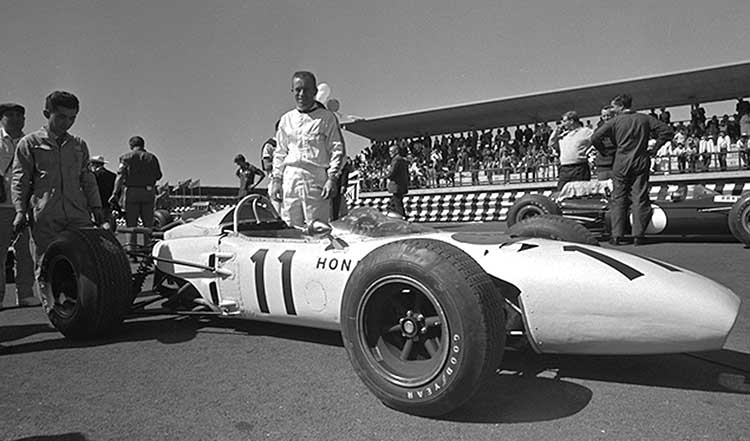
Richie Ginther at the Mexican Grand Prix of 1965
In the early 2000s, Goodyear had already been competing in a number of prestigious races for 35 years. This resulted by winning 369 Grand Prix, including 26 victories in World Constructors’ Championship (a title that no-one else in the world has been able to take away from Goodyear so far). The drivers could choose tyres by themselves in twenty-eight races, although this no longer exists. Yet at that time there was an extra incentive for Goodyear to invest in innovative technologies and developments to stay ahead of competitors on the track.
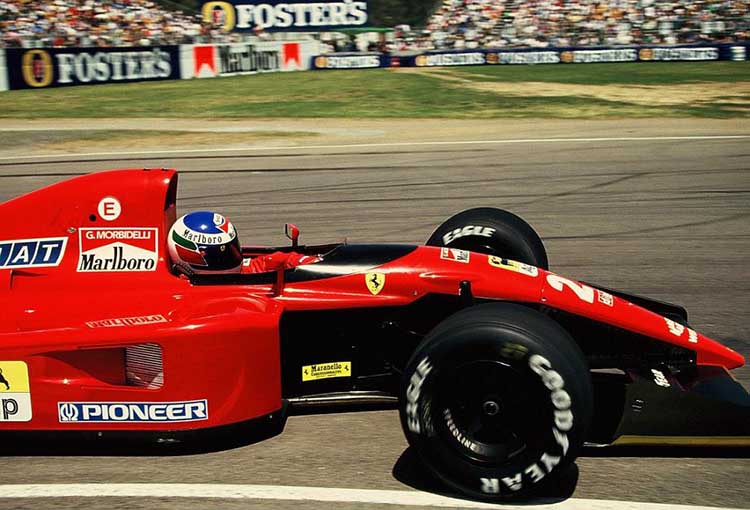
Following the launch of McLaren F1 supercar, the Goodyear Eagle F1 has achieved legendary status over time. The V12 engine with the volume of 6.1 liter and 620 horsepower needed special tyres to enhance the safety of such a fast car. It seemed a sensation to have Goodyear Eagle F1 tyres made for the car. Manufacturers of McLaren claimed that the contribution of the tyre makers was significant. In fact, the complex calculation of handling without loss of comfort implied the use of special tyres, which became “an integral component of the suspension”: “Weight, safety, noise and dynamic performance were the most important factors”.

McLaren F1
In 1992, the Eagle F1 GS-D2 model was launched on the market, the name of which means Grand Sport - Directional. It was followed by the GS-D3 modification. Both models were designed for high-performance sports cars, including sports cars of the upper-mid market. Handling on the dry track and excellent grip on the wet surface, provided by versions with a directional pattern, impressed tuning experts, who began to increasingly choose these wheels for their projects.
The most significant and essential change to Eagle F1 occurred in 2007 when an asymmetric pattern replaced the directional pattern design. Laurent Colantonio, Executive Director of Tyre Technology Development for Europe, Middle East and Africa (EMEA), explained the reasons for this change. Laurent started working with the brand as an engineer when Eagle F1 tyres were still directional. These appeared to be available in 15-inch automotive wheels for sports cars and even lower wheels for supercars than those fitted on today’s compact cars.
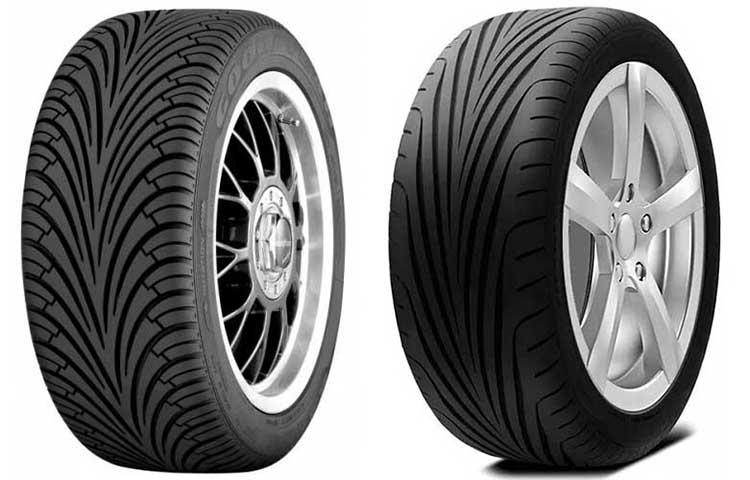
Eagle F1 GS-D2 and GS-D3
Colantonio claims that the designers of the Eagle F1 GS-D2 and GS-D3 models paid increased attention to such parameters as aquaplaning resistance and handling on a wet track in general. The unique tread pattern they created proved to be a breakthrough technology in the tyre industry.
- It gave Goodyear a clear advantage over competitors in the UHP segment, - Laurent clarified. - We were looking for a tread pattern with a strong shoulder area that could withstand the extra dynamic load.
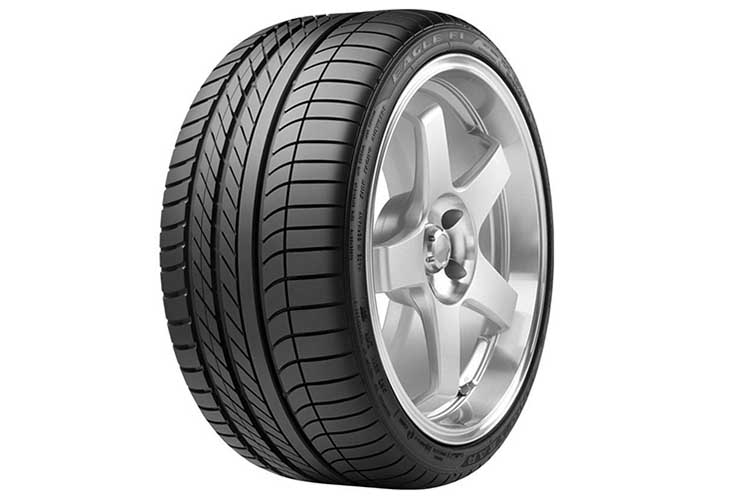
The development of the automobile market was moving towards making cars bigger, and by 2005 18- and 19-inch automotive wheels were the norm, as car power and weight were steadily increasing. It was then that Goodyear’s engineering and development team had the idea of adopting an asymmetric pattern, reinforcing the rigidity of the shoulder area. This was a solution that helped “to maintain the trademark characteristics” of fast emergency braking and handling on water-coated tracks. Responsiveness on the dry track was also improved.
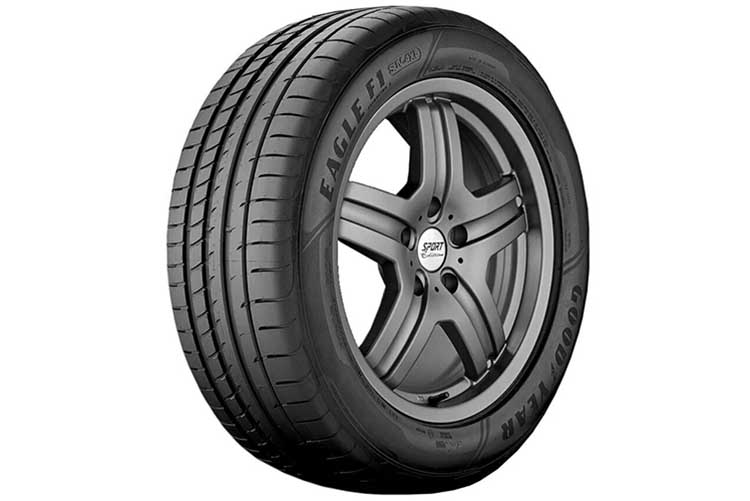
The third generation of Eagle F1 Asymmetric hit the market in 2016, by that time the engineers had invented and introduced innovative tread pattern elements that had been designed to enhance environmental and performance qualities.

The company, in compliance with European labelling standards, began to develop technologies that contributed to the reduction of noise levels and improvement of “rolling resistance”. Consumers began to pay attention to these characteristics even when purchasing sports cars.
According to Colantonio, Goodyear has succeeded in significantly altering these figures as well as the traction and grip parameters. The Eagle F1 Asymmetric 3 tyre introduces Active Braking technology, which, by enlarging the tread block, shortens braking distance by improving traction under braking. For the same generation, the company gave the market a reinforced design, which is referred to as “Reinforced Construction Technology”. The reduced weight construction was characterized by increased durability. This gives Eagle F1 its unique characteristic of superior performance coupled with enhanced efficiency. The launch of the Asymmetric 3 model on the market triggered the development of technology to improve handling and correct tyre behavior on wet surfaces. 20-inch automotive wheels became fashionable. And the number of tyre sizes within Eagle F1 range has been increased.
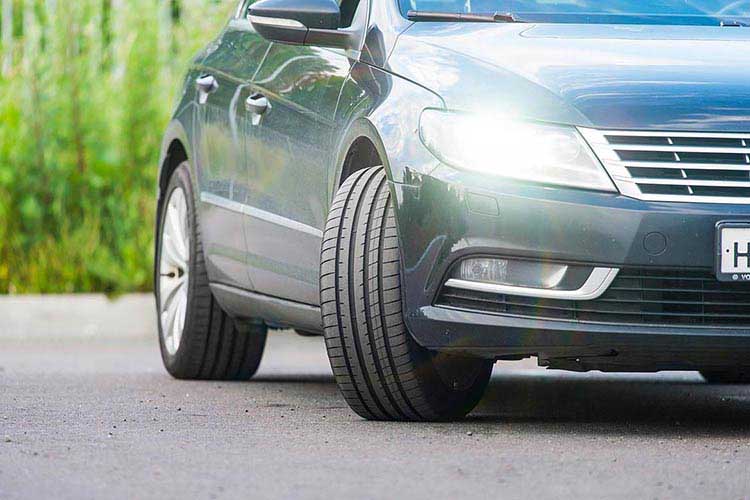
By 2019, the Eagle F1 Asymmetric 5 model proved to be a prize-winner and the leader in various tests, Auto Bild Sportscars magazine awarded it the “exemplary” mark. In 2021, this model was ranked best in the UHP class by the British edition of Tyre Reviews. Its tester Jonathan Benson claimed that the Eagle F1 Asymmetric 5 tyres from Goodyear showed no shortcomings - offering good grip in both wet and dry conditions. The tyres provide low rolling resistance, good handling for a sporty driving style and excellent aquaplaning resistance.
.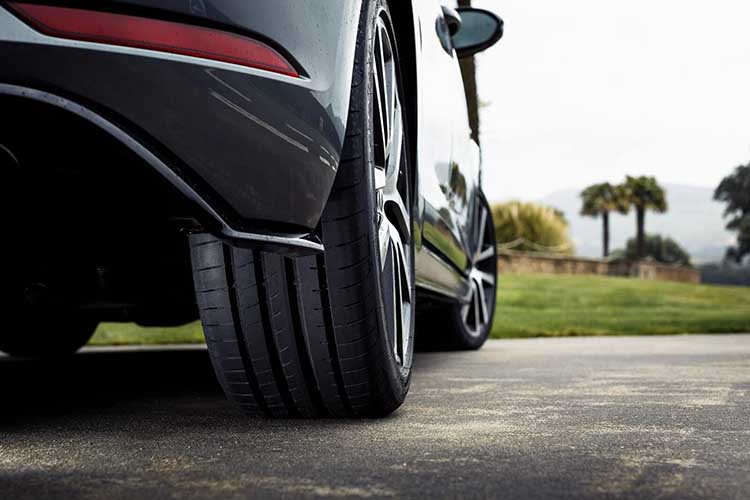
The development of the Eagle F1 Asymmetric 6 generation has, as ever, taken into account automotive market trends. In particular, such trends as increasing torque, weight and power of sports cars. The manufacturers’ aspirations to convert all future models to electric motors were also considered. The Asymmetric 6 contrasts significantly with its competitors, with innovations introduced: the contact patch is more adaptive, it adjusts to the loading conditions, creating an ideal geometric shape. With all versions now available in Eagle F1 range, the tyre is adapted for electric cars. But Eagle F1 Asymmetric 6 appears to be the first model created with electric car manufacturers in mind: its tread pattern reduces noise by 1 decibel, a feature inscribed on the EU regulation label. The rubber compound has been modified to offer increased range in electric vehicles, at the cost of reduced rolling resistance. These features have made the new modification of the tyre ready for future market demands.
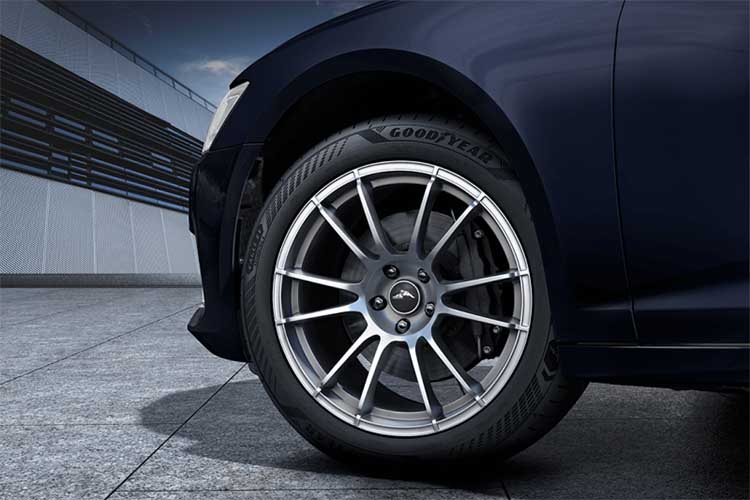
Goodyear Eagle F1 Asymmetric 6








